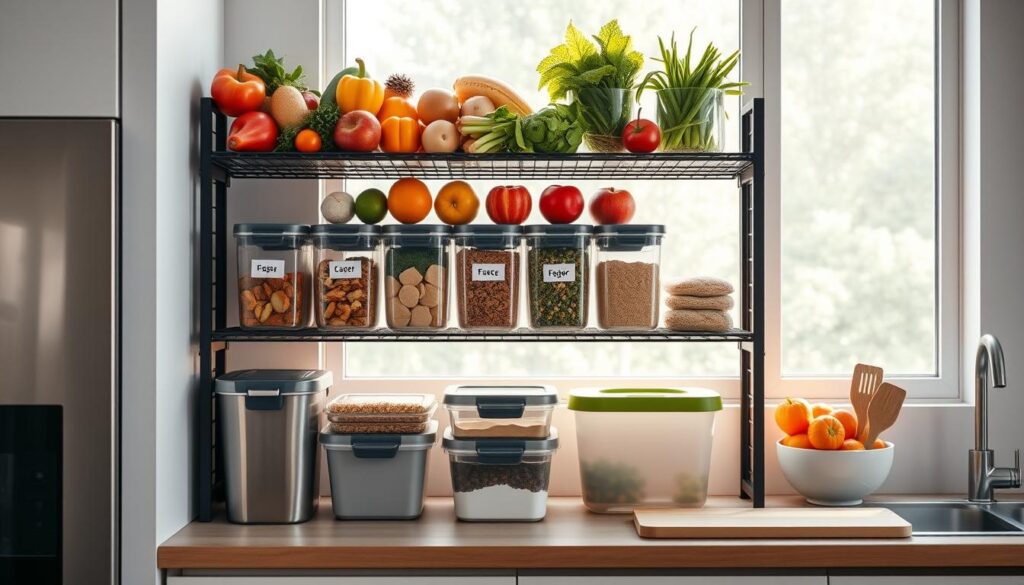Blog
The 80/20 Frugal Hack: Save Big Without Completely Sacrificing Your Life

Adopting a more frugal lifestyle doesn’t mean you have to give up the things you enjoy. The 80/20 rule, also known as the Pareto principle, suggests that 80% of your results come from 20% of your efforts. When applied to personal finance, this principle can help you save money without drastically changing your lifestyle.
By focusing on the 20% of your expenses that cause 80% of your financial stress, you can make targeted adjustments to save big. This approach allows you to continue enjoying your life while making smart financial decisions. It’s about being mindful of your spending habits and making conscious choices that align with your financial goals.
Key Takeaways
- Understand the 80/20 rule and its application to personal finance.
- Identify areas where you can make adjustments to save money.
- Make targeted changes to your spending habits.
- Enjoy your life while saving money with smart financial decisions.
- Be mindful of your expenses to achieve financial stability.
Understanding the 80/20 Principle in Frugal Living
Understanding the 80/20 principle is crucial for effective frugal living and achieving significant savings. This principle, also known as the Pareto Principle, suggests that approximately 80% of results come from 20% of efforts. In the context of frugal living, it means that a substantial portion of savings can be achieved by focusing on a few key actions or budget hacks.
What is the Pareto Principle?
The Pareto Principle was first observed by Vilfredo Pareto, who noticed that about 80% of Italy’s wealth was owned by 20% of the population. This principle has since been applied to various fields, including economics, business, and personal finance. It highlights the uneven distribution of causes and effects, where a small proportion of inputs or efforts generate a disproportionately large proportion of outputs or results.
How the 80/20 Rule Applies to Saving Money
In frugal living, the 80/20 rule implies that a significant portion of savings can be achieved by identifying and focusing on the most impactful budget hacks. For instance, a few strategic changes in spending habits or financial decisions can lead to substantial savings. This might involve cutting back on a few major expenses, optimizing investment strategies, or adopting efficient saving methods.
The Science Behind Focused Effort
The effectiveness of the 80/20 principle lies in its emphasis on focused effort. By identifying the vital few actions that will generate the most significant results, individuals can prioritize their efforts and maximize their savings. This approach not only simplifies financial management but also makes it more efficient, allowing for a more balanced and sustainable approach to frugal living.
Why Traditional Frugality Often Fails
Traditional frugality often fails because it neglects the importance of sustainability in financial decisions. While the intention behind extreme penny-pinching is to save money, it can lead to burnout and a feeling of deprivation, making it difficult to maintain in the long term.
The Burnout from Extreme Penny-Pinching
Extreme frugality can be all-consuming, leading to mental and physical exhaustion. The constant focus on saving money can make individuals feel like they’re sacrificing too much of their quality of life. This burnout can ultimately cause people to abandon their frugal lifestyle altogether.
The Psychology of Deprivation
When individuals feel deprived of basic comforts or pleasures, they are more likely to rebel against their own frugal habits. This psychological backlash can lead to overspending as a form of compensation, negating the initial savings. It’s crucial to strike a balance between saving and enjoying life.
Sustainability vs. Short-Term Savings
A sustainable approach to frugality focuses on long-term habits rather than short-term gains. By adopting a more balanced lifestyle, individuals can save money without feeling excessively deprived. This approach aligns with the principles of minimalism, where the focus is on simplicity and efficiency rather than extreme austerity.
Identifying Your Big-Impact Spending Categories
Effective frugal living starts with a clear picture of your spending categories. To apply the 80/20 rule, you need to understand where your money is going.
Conducting a Personal Spending Audit
A personal spending audit is a thorough examination of your financial transactions over a period. It helps identify areas where you can cut back. To conduct an audit, you should:
- Gather all financial statements, including bank and credit card records.
- Record every transaction, no matter how small.
- Categorize your expenses to see where your money is going.
This process might seem tedious, but it’s crucial for understanding your spending habits. By doing so, you’ll be able to pinpoint areas where adjustments can be made.
Finding Your Financial “Vital Few”
The “vital few” refers to the few categories that account for the majority of your spending. Identifying these areas allows you to focus your efforts on making significant changes. For most people, these categories include housing, transportation, and food.
Tools for Tracking and Analysis
Several tools can help you track and analyze your spending. These include:
- Budgeting apps like Mint or Personal Capital.
- Spreadsheets for detailed analysis.
- Online banking tools that categorize your expenses.
By using these tools and understanding your “vital few” spending categories, you can make targeted adjustments to improve your quality of life while saving money.
Housing: The 20% Effort That Saves 80%
For most people, housing is the largest monthly expenditure, making it a prime target for cost-cutting measures. By applying the 80/20 principle, individuals can significantly reduce their housing costs without drastically altering their lifestyle.
Strategic Housing Decisions
Making informed decisions about housing can lead to substantial savings. This includes considering factors like location, size, and type of housing. For instance, opting for a smaller home or an area with lower living costs can reduce expenses.
Energy-Efficient Upgrades That Actually Pay Off
Investing in energy-efficient upgrades can lower utility bills and contribute to long-term savings. Some upgrades that are known to provide a good return on investment include:
- LED lighting
- Smart thermostats
- Energy-efficient appliances
| Upgrade | Average Cost | Potential Savings |
|---|---|---|
| LED Lighting | $500 | $100/year |
| Smart Thermostat | $250 | $150/year |
| Energy-Efficient Appliances | $1000 | $200/year |
Negotiating Rent and Mortgage Terms
Negotiating the terms of your rent or mortgage can lead to significant savings. This might involve discussing a lower rent with your landlord or refinancing your mortgage to secure a better interest rate.
House Hacking Opportunities
House hacking, such as renting out a spare room or exploring co-living arrangements, can also reduce housing costs. This approach not only saves money but can also provide additional income.
By implementing these strategies, individuals can make a substantial impact on their housing costs, freeing up more resources for other aspects of their lives.
Transportation Hacks for Maximum Savings
Effective transportation hacks can lead to substantial savings without greatly impacting our lifestyle. By making a few strategic changes, individuals can significantly reduce their transportation costs.
Vehicle Ownership vs. Alternatives
One of the most significant decisions affecting transportation costs is whether to own a vehicle or use alternative modes of transport. While owning a car provides flexibility, it comes with expenses such as purchase price, insurance, maintenance, and fuel. Alternatives like public transport, carpooling, or cycling can offer considerable savings. For instance, using public transport for daily commutes can save around $800-$1,000 per month, based on average U.S. costs.
- Public transportation: Cost-effective and environmentally friendly.
- Carpooling: Reduces fuel costs and wear on vehicles.
- Cycling: Zero fuel cost and health benefits.
Fuel Efficiency Strategies
For those who need to own a vehicle, improving fuel efficiency can lead to significant savings. Regular maintenance, such as oil changes and tire pressure checks, can improve a vehicle’s fuel economy. Additionally, driving habits like maintaining a constant speed and avoiding idling can also reduce fuel consumption.
Key fuel efficiency tips:
- Regular vehicle maintenance.
- Proper tire inflation.
- Avoiding aggressive driving.
Maintenance Priorities That Prevent Costly Repairs
Regular maintenance is crucial to prevent costly repairs down the line. Prioritizing tasks such as oil changes, brake pad replacements, and belt replacements can extend the life of a vehicle and avoid expensive fixes.
Optimizing Commuting Costs
Optimizing commuting costs can be achieved by exploring alternatives to driving alone. Using public transport, carpooling, or even negotiating a work-from-home arrangement can significantly reduce expenses related to fuel, maintenance, and parking.
By implementing these transportation hacks, individuals can achieve significant savings. Whether it’s through alternative modes of transport, improving fuel efficiency, or maintaining vehicles properly, the potential for savings is substantial.
Food Budget Optimization Without Sacrificing Taste
Saving money on food is achievable without compromising on quality or flavor by implementing a few key changes. With conscious spending habits, you can enjoy your favorite meals while optimizing your food budget.
Strategic Grocery Shopping
One of the most effective ways to save on food is through strategic grocery shopping. This involves:
- Planning your shopping trip around weekly sales
- Buying in bulk when possible
- Choosing seasonal produce for better prices
By adopting these strategies, you can significantly reduce your grocery bills without sacrificing the quality of your meals.
Meal Planning for Efficiency
Meal planning is another crucial aspect of food budget optimization. It helps in:
- Reducing food waste by planning meals around what you already have
- Avoiding last-minute takeouts by having a clear meal plan
- Saving time during the week with pre-planned meals
Effective meal planning enhances your quality of life by ensuring you have healthy, home-cooked meals without the hassle.
Restaurant and Takeout Strategies
Eating out doesn’t have to derail your budget. By choosing restaurants that offer value for money and limiting the frequency of takeouts, you can enjoy dining out while keeping your expenses in check.
Food Waste Reduction Techniques
Reducing food waste is a critical component of optimizing your food budget. Techniques include:
- Proper storage of leftovers
- Using up ingredients before they expire
- Composting food scraps

By implementing these strategies, you can enjoy a fulfilling culinary experience while maintaining a healthy budget. It’s all about making conscious choices that align with your financial goals without sacrificing the pleasure of eating well.
Implementing the 80/20 Approach to Frugal Living Daily
The key to successful frugal living lies in effectively integrating the 80/20 approach into your daily routine. By focusing on the vital few actions that generate the most significant results, you can maximize your savings without feeling overly restricted.
Creating Sustainable Habits
To make frugal living a sustainable part of your life, it’s essential to create habits that support your financial goals. This involves:
- Setting clear, achievable objectives
- Gradually implementing changes to avoid burnout
- Monitoring progress and making adjustments as needed
Time-Saving Money Hacks
Efficient money management is crucial for frugal living. Some effective time-saving strategies include:
- Automating bill payments and savings transfers
- Using cashback apps and rewards programs
- Shopping during sales periods and using coupons
Automating Your Savings
Automation is a powerful tool for consistent saving. By setting up automatic transfers to your savings or investment accounts, you ensure that you save a portion of your income before you have the chance to spend it.
Decision-Making Frameworks
Having a decision-making framework can help you make frugal choices more intuitively. Consider using the 30-day rule for non-essential purchases or evaluating buys based on their cost per use.
By incorporating these strategies into your daily life, you can effectively apply the 80/20 principle to achieve significant savings without drastically altering your lifestyle.
Smart Technology Investments for Long-Term Savings
Leveraging smart technology is key to optimizing your savings potential. By integrating the right technological tools into your daily life, you can significantly reduce unnecessary expenses and enhance your overall quality of life.
Apps and Tools for Budget Management
Effective budget management is crucial for frugal living. Utilizing apps like Mint, You Need a Budget (YNAB), or Personal Capital can help track your expenses, create budgets, and set financial goals. These tools offer insights into your spending habits, enabling you to make informed decisions.
- Mint: Offers comprehensive financial tracking and budgeting.
- YNAB: Focuses on managing your finances by assigning jobs to every dollar.
- Personal Capital: Provides a holistic view of your financial situation, including investments.
Energy-Saving Smart Home Devices
Smart home devices can significantly reduce energy consumption, leading to substantial savings. Devices like smart thermostats (e.g., Nest), smart lighting systems (e.g., Philips Hue), and energy monitors (e.g., Sense) help optimize energy use.
Digital Subscriptions Worth Keeping
In today’s digital age, subscriptions can quickly add up. It’s essential to regularly review your subscriptions and cancel any that are not providing value. Services like streaming platforms, software subscriptions, and membership programs should be assessed for their cost-effectiveness.
- Evaluate the frequency of use for each subscription.
- Consider cheaper alternatives or bundles.
- Cancel subscriptions that no longer serve a purpose.
By strategically investing in smart technology, you can achieve a more frugal and sustainable lifestyle, enhancing your minimalism practices and overall quality of life.
Common Mistakes in 80/20 Frugal Living
While the 80/20 principle offers a powerful approach to frugal living, many individuals inadvertently undermine its effectiveness. The key to successful frugal living lies in understanding and avoiding common pitfalls.
Focusing on the Wrong 20%
One of the most significant mistakes is focusing on the wrong areas of expenditure. It’s crucial to identify the 20% of expenses that account for 80% of the financial impact. For instance, spending too much time and effort on minor expenses can distract from more significant financial decisions.
- Prioritize big-ticket items like housing and transportation.
- Analyze daily expenses to pinpoint areas for improvement.
- Use tools and apps to track spending effectively.
False Economy Traps
False economy traps occur when cheaper alternatives end up costing more in the long run. For example, buying cheap, low-quality items that need frequent replacement can be more expensive than investing in higher-quality products.
Example: Opting for a cheaper, less energy-efficient appliance might save money upfront but could lead to higher energy bills over time.
Neglecting Quality Where It Matters
While being frugal is about saving money, it’s equally important not to compromise on quality where it counts. Investing in quality for critical areas can lead to long-term savings and satisfaction.
Forgetting the Time Value of Money
Understanding the time value of money is crucial in making smart financial decisions. It’s not just about saving money but also about making your money work for you over time.
“The time value of money is a crucial concept in finance, emphasizing that a dollar today is worth more than a dollar in the future due to its potential earning capacity.”
By being mindful of these common mistakes and adopting a conscious spending approach, individuals can maximize the benefits of the 80/20 rule in their frugal living journey.

Mindful Consumption: Quality Over Quantity
Mindful consumption, centered on the principle of quality over quantity, offers a practical pathway to significant savings and enhanced lifestyle satisfaction. This approach encourages individuals to be more thoughtful and intentional in their purchasing decisions, focusing on acquiring fewer, but higher-quality items that provide long-term value.
The Buy-It-Once Philosophy
The buy-it-once philosophy is about investing in high-quality products that may have a higher upfront cost but are designed to last, reducing the need for frequent replacements. This strategy not only saves money in the long run but also reduces waste and supports sustainable living.
Examples of the buy-it-once philosophy in action include:
- Investing in durable, well-made clothing that withstands the test of time.
- Purchasing high-quality kitchen appliances that are built to last.
- Opting for sturdy, comfortable furniture that requires minimal maintenance.
Calculating Cost Per Use
Calculating the cost per use of an item is a practical way to assess its value over time. This involves dividing the total cost of the item by the number of times it is used. By doing so, consumers can make more informed decisions about their purchases, prioritizing items that offer a low cost per use.
For instance, a high-quality, durable water bottle that costs $20 and is used daily for a year (365 times) has a cost per use of approximately $0.055. In contrast, a cheaper, less durable bottle that costs $5 but needs to be replaced every month (12 times) has a cost per use of about $0.42.
Identifying Value-Based Purchases
Identifying value-based purchases involves evaluating the benefits and value that a product or service provides, rather than just its price. This includes considering factors such as durability, functionality, and the overall impact on one’s quality of life.
Minimalism as a Financial Strategy
Minimalism, when adopted as a financial strategy, involves simplifying one’s lifestyle by reducing unnecessary expenses and focusing on what truly adds value. This approach can lead to significant savings, reduced debt, and a more fulfilling life.
Key aspects of minimalism include:
- Reducing clutter and living with only what is necessary or brings joy.
- Avoiding impulse purchases and adopting a more thoughtful consumption habit.
- Investing in experiences rather than material goods.
Conclusion: Sustainable Frugality for a Fulfilling Life
Adopting the 80/20 principle in frugal living is about making conscious spending choices that lead to a fulfilling life while saving money. By focusing on high-impact budget hacks, individuals can significantly reduce their expenses without sacrificing their quality of life.
Implementing sustainable frugality involves identifying areas where small changes can lead to substantial savings. This approach enables individuals to enjoy a better quality of life while being mindful of their spending habits.
By applying the 80/20 rule to daily life, individuals can make informed decisions about their spending, leading to a more balanced and fulfilling lifestyle. Conscious spending habits, coupled with effective budget hacks, can result in significant long-term savings.
Embracing this approach to frugality allows individuals to prioritize what truly matters, enhancing their overall quality of life while maintaining a healthy financial outlook.







